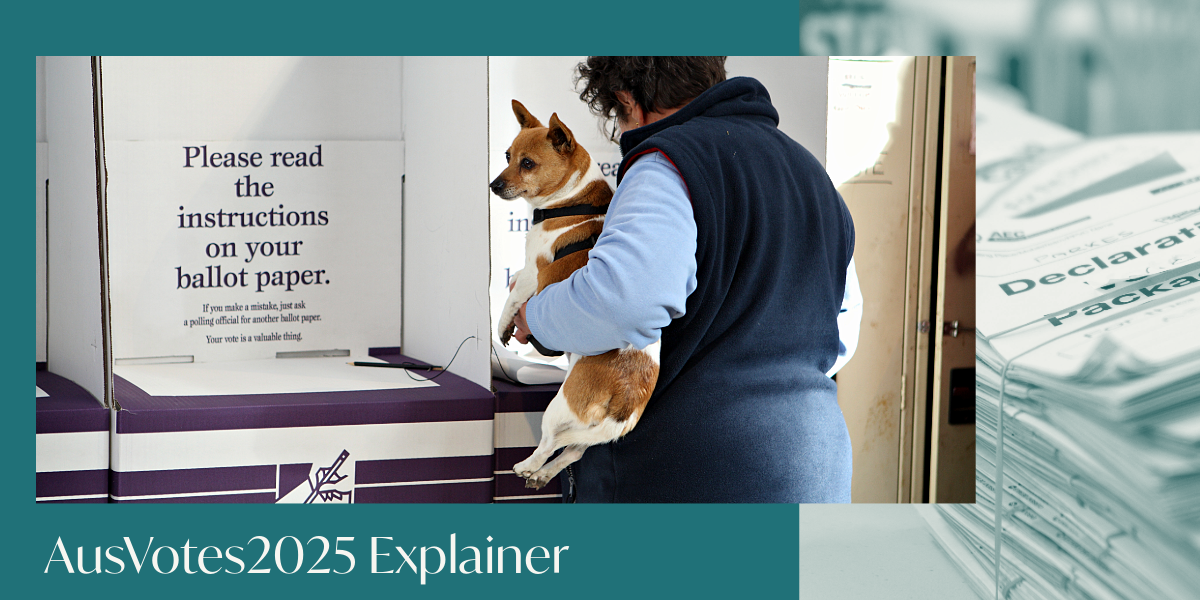Voting in the seat of New England during the 2025 Federal Election is your opportunity to have a say in who represents our community. Here’s what you need to know to make your vote count.
The Candidates for New England
There are seven candidates contesting the seat of New England, listed on the ballot paper in the following order:
- JOYCE, Barnaby – The Nationals
- WALES, Wendy – The Greens
- LEDGER, Natasha – Independent
- HUGHES, Laura – Labor
- MASTERS, Holly – Family First
- JUCHAU, Todd Charles – Trumpet of Patriots
- LARKHAM, Brent – Pauline Hanson’s One Nation
How to vote correctly for the House of Representatives
To make a formal vote (a vote that counts), you must number every box on the ballot paper in order of your preference.
- Write the number ‘1’ in the box next to the candidate who is your first choice.
- Then write ‘2’ in the box next to your second choice, ‘3’ next to your third, and so on until all seven boxes are numbered.
- You must not use ticks, crosses, or leave any boxes blank. If you skip or repeat a number, your vote may be considered informal and won’t be counted.
Informal Votes
A vote is considered informal (and may not be counted) if:
- The ballot paper is blank or incomplete
- You use ticks, crosses, or repeated numbers
- You don’t number all the boxes
- There’s any writing that could identify you
- Your intention isn’t clear
There are a number of ‘savings provisions’ which are rules that allow votes to be counted if you make a mistake but the returning officer can figure out what you were trying to do, but the important thing is to number every box.
If you don’t want to vote for anyone, it is your right to leave the ballot paper blank. Read more in our previous explainer on preferential voting.
How to vote for the Senate
For the Senate, you’ll receive a large white Senate ballot paper to vote for Senators representing New South Wales. This paper has a thick black line running across it and you must choose to vote either above the line or below the line, not both.
Voting Above the Line
Above the line, you vote for parties or groups only. You do not vote for individual Senators.
- You must number at least six boxes (from 1 to 6).
- Put a ‘1’ in the box above the party or group you most prefer, a ‘2’ above your second choice, and so on.
- You can number more than six if you wish — and your preferences will be distributed to the candidates within those groups in the order they appear.
- Do not mark any boxes below the line.
Your vote will count for all the candidates below your number 1 first, then all the candidates below your number 2, and so on. Parties do not determine where your preferences go, only you do.
Voting Below the Line
Below the line, you vote for individual candidates.
- You must number at least 12 boxes (from 1 to 12).
- Place a ‘1’ next to your favourite candidate, ‘2’ for your next choice, and continue until you’ve numbered at least 12 boxes.
- You may number more if you’d like.
- Do not mark any boxes above the line.
Parties and Groups on the 2025 Senate Ballot (in order of appearance)
Each group is listed across the top of the ballot paper:
Group A – Labor
Group B – (Independent/No party) – Max Boddy group
Group C – Australia’s Voice
Group D – FUSION | Planet Rescue | Whistleblower Protection | Innovation
Group E – Family First
Group F – Pauline Hanson’s One Nation
Group G – Animal Justice Party
Group H – Australian Christians
Group I – Libertarian / HEART / Gerard Rennick People First
Group J – Legalise Cannabis Party
Group K – Sustainable Australia Party – Universal Basic Income
Group L – Indigenous – Aboriginal Party of Australia
Group M – Trumpet of Patriots
Group N – Liberal and Nationals
Group O – Jacqui Lambie Network
Group P – Citizens Party
Group Q – Socialist Alliance
Group R – The Greens
Ungrouped – Independent candidates not in a listed party or group
Informal votes
Your Senate vote may be deemed informal if:
- You mark boxes both above and below the line
- You do not number at least six boxes above the line OR at least twelve below
- You use ticks, crosses, or repeated numbers
- There’s any writing that could identify you
- Who you intended to vote for isn’t clear
If you’re unsure or make a mistake, ask a polling official for help or a replacement ballot.
As for the House of Representatives, it it your right to leave the ballot paper blank if you don’t want to vote for anyone.
Yes, use the pencil
Every election there is a lot of misinformation online about how you need to take your own pen because otherwise someone can rub out your vote.
This is nonsense. Pencils are cheaper, more reliable (they don’t run out of ink) and importantly what is written in pencil doesn’t smudge when the ballot paper is folded like some pen inks do.
If you still want to bring a pen – nobody’s stopping you. Just be respectful to AEC staff when they offer you a pencil.
Don’t draw pictures or write messages
Ok, so you don’t think much of the politicians. We understand.
But the politician isn’t going to see the ballot paper. It’s most likely a retired teacher who likes to work on election day for a little extra money to spend on the grandkids who will see your arts and crafts.
Would you want your Grandma to read a page full of abuse or pictures of penises? No? Then don’t put it on the ballot paper. Please.
If you’d like to tell the politicians what they think of them, post it on their Facebook page.
Need Help?
Polling officials are available to help if you’re unsure how to complete your ballot. If you make a mistake, just ask for a replacement ballot paper.
Follow all the New England Times coverage of the federal election here or have your say on Engage
See more about the race in New England here
See more about the race in Parkes here


